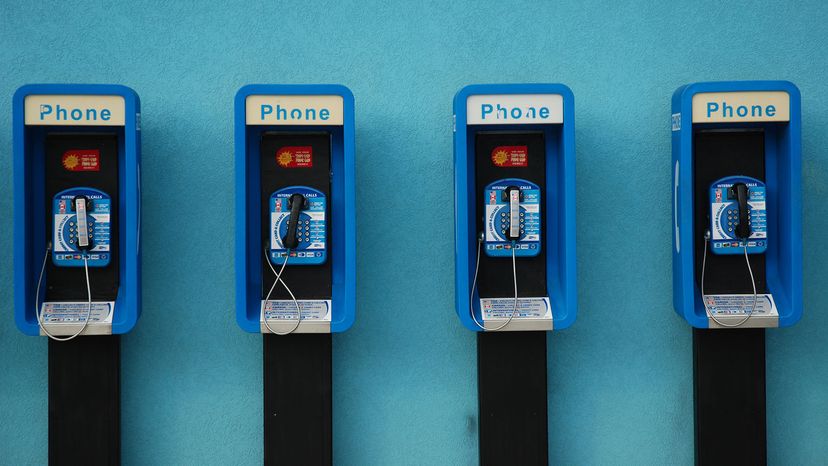
In most U.S. cities, a pay phone has become a rare sight. Last year, New York City took its very last public pay phone off the street and put it in a museum. The stark shift happened fast; in 1995, the number of pay phones in the U.S. peaked at 2.6 million, Slate reported in 2022. In less than three decades, that’s dwindled to fewer than 100,000. Many still stand to this day but are no longer operational. You may see a rusty phone booth in front of a rural gas station here and there, but there’s no guarantee it’ll connect a call. By and large, the pay phone has become more of a relic than a way to stay in touch.
That’s not to say they’re totally gone. In some places there are still private pay phones, which bring in steady business for the more than 1,000 companies that own them. But the major telephone companies have all sold off their public phones — Sprint in 2006, AT&T in 2008 and Verizon in 2011. The phones that remain are owned by independent operators who can theoretically charge whatever they want, making them cost-prohibitive to the people who need them most.
Advertisement
There Are Still Many Phoneless People
The slow death of the pay phone has been harder for some people than for others. Though the vast majority of Americans now own some kind of cell phone, there are still some — including impoverished or unhoused people — who depend on the availability of public pay phones.
In some cities, innovators are working to solve the problem. Futel is a project based in Portland, Oregon, that updates old pay phones to provide free calls and voicemail. It has eight outdoor, pay phone-style phones in Portland, plus one in Long Beach, Washington, and one each in Ypsilanti and Detroit, Michigan. "Denial of telephony services has long been a tactic used against undesirable populations," write Futel’s founders, "and our devices will counteract that."
Advertisement
In Philadelphia, an "amateur phone collective" called PhilTel is doing more than just preserving old pay phones: They’re installing new ones, minus the "pay" part. The project aims to create a network of phones that make free calls anywhere in North America.
PhilTel’s founder, Mike Dank, told The Washington Post he’s always had a thing for pay phones. When he learned about Futel, he thought a similar initiative would find traction in Philadelphia. The first free phone was installed in December outside a bookstore near the city’s Chinatown neighborhood.
Advertisement
How Will Free Phones Work?
To turn a former pay phone into a PhilTel free phone requires a bit of a hardware upgrade. The new phones function like the old-fashioned ones, using updated technology to link to the modern phone system. Dank and his co-founder, Naveen Albert, devised a way to replace the coin system with a payment-free circuit board and router. When a caller picks up the phone, the analog phone works with the digital public phone network using Voice over Internet Protocol, or VoIP, which connects calls using an internet connection. It all runs on a software called Asterisk.
"Asterisk acts a bit like a bridge between the Public Switched Telephone Network (PSTN) and our collection of payphones; we can facilitate connections between the payphones and the outside world seamlessly," the PhilTel team explains on their website.
Advertisement
Volunteers run PhilTel, which funds itself entirely on donations. It’s a marriage of old-school hardware and modern technology that aimed to help people.
"There are lots of people who can’t afford a cell phone or a phone bill," Dank told The Washington Post. He thinks the new phones could be useful in emergency situations, or for people who otherwise have no way to stay in touch with loved ones. "I hope that bringing back a pay phone will help improve somebody’s life," he said.
Now That’s Interesting
The world’s first pay telephone was installed in 1889 on the corner of Main Street and Central Row in downtown Hartford, Connecticut. Today, there is no phone on that corner, but in its place a tiny blue sign that reads: "World’s First Pay Telephone. Invented by William Gray and Developed by George A. Long, was installed on this corner in 1889."
Advertisement

